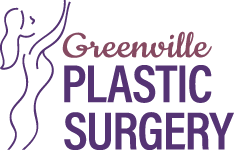Breast Reduction
Reduction Mammoplasty
Overly large breasts can cause some women to have both health and emotional problems. In addition to self image issues, you may also experience physical pain and discomfort. The weight of excess breast tissue can impair your ability to lead an active life. The emotional discomfort and self-consciousness often associated with having large pendulous breasts is as important an issue to many women as the physical discomfort and pain. Also known as reduction mammaplasty, this procedure removes excess breast fat, glandular tissue and skin to achieve a breast size in proportion with your body and to alleviate the discomfort associated with overly large breast.
INFORMATION REGARDING INSURANCE COVERAGE AND SCHEDULING:
If you wish to file this procedure to your insurance company, referral by your primary care physician is required. Please note that each insurance company has specific guidelines that must be met in order to cover this procedure. The general guidelines are listed under the “Patient Forms” section of our website. As a courtesy, we will submit a prior approval request for you after your visit to our office.
Greenville Plastic Surgery is a contracted provider for the following insurance companies: AIH, Aetna, BCBS, Cigna & MedCost. Please note that payment of deductible and copayment is required in full prior to your procedure.
The Best Candidates
- You are physically healthy
- You have realistic expectations
- You don’t smoke
- You are bothered by the feeling that your breasts are too large
- Your breasts limit your physical activity
- You experience back, neck and shoulder pain caused by the weight of your breasts
- You have regular indentations from bra straps that support heavy, pendulous breasts
- You have skin irritation beneath the breast crease
- Your breasts hang low and have stretched skin
- Your nipples rest below the breast crease when your breasts are unsupported
- You have enlarged areolas caused by stretched skin
Considerations Before Having Surgery
- Breast reduction surgery can interfere with certain diagnostic procedures
- Breast and nipple piercing can cause an infection
- Your ability to breastfeed following reduction mammaplasty may be limited; talk to your doctor if you are planning to nurse a baby
- The procedure can be performed at any age, but is best done when your breasts are fully developed
- Changes in the breasts during pregnancy can alter the outcomes of previous breast reduction surgery, as can significant weight fluctuations
Preparing For Your Surgery
- Why you want the surgery, your expectations and desired outcome
- Medical conditions, drug allergies and medical treatments
- Use of current medications, vitamins, herbal supplements, alcohol, tobacco and drugs
- Previous surgeries
- Family history of breast cancer and results of any mammograms or previous biopsies
Your surgeon will also:
- Evaluate your general health status and any pre-existing health conditions or risk factors
- Examine your breasts, and may take detailed measurements of their size and shape, skin quality, placement of your nipples and areolas
- Take photographs for your medical record
- Discuss your options and recommend a course of treatment
- Discuss likely outcomes of breast reduction and any risks or potential complications
- Discuss the use of anesthesia during your breast reduction
Prior to surgery, you may be asked to:
- Get lab testing or a medical evaluation
- Take certain medications or adjust your current medications
- Get a baseline mammogram before surgery and another one after surgery to help detect any future changes in your breast tissue
- Stop smoking well in advance of surgery
- Avoid taking aspirin, anti-inflammatory drugs and herbal supplements as they can increase bleeding
Special instructions you receive will cover:
- What to do on the day of surgery
- Post-operative care and follow-up
Where Your Surgery Will Be Performed
Your plastic surgeon will also discuss where your procedure will be performed. Breast reduction surgery may be performed in an accredited in office surgical suite, outpatient surgical center, or a hospital. For your breast reduction procedure be sure to arrange for someone to drive you to and from surgery and to stay with you for at least the first night following surgery.
Type Of Anesthesia
Breast reduction can be performed with a general anesthesia, so you’ll sleep through the entire operation.
The Surgery
Breast reduction is usually performed through incisions on your breasts with surgical removal of the excess fat, glandular tissue and skin.
The technique used to reduce the size of your breasts will be determined by your individual condition, breast composition, amount of reduction desired, your personal preferences and the surgeon’s advice.
Incision options include:
- A circular pattern around the areola
- A keyhole or racquet-shaped pattern with an incision around the areola and vertically down to the breast crease
- An inverted T or anchor-shaped incision pattern
The incision lines that remain are visible and permanent scars, although usually well concealed beneath a swimsuit or bra.
Removing tissue and repositioning:
After the incision is made, the nipple-which remains tethered to its original blood and nerve supply-is then repositioned. The areola is reduced by excising skin at the perimeter, if necessary.
Underlying breast tissue is reduced, lifted and shaped. Occasionally, for extremely large pendulous breasts, the nipple and areola may need to be removed and transplanted to a higher position on the breast (free nipple graft).
Closing the incisions:
The incisions are brought together to reshape the now smaller breast. Sutures are layered deep within the breast tissue to create and support the newly shaped breasts; sutures, skin adhesives and/or surgical tape close the skin. Incision lines are permanent, but in most cases will fade and significantly improve over time.
See the results:
The results of your breast reduction surgery are immediately visible. Over time, post-surgical swelling will resolve and incision lines will fade. Satisfaction with your new image should continue to grow as you recover.
After Your Surgery
When your procedure is complete, dressings or bandages will be applied to the incisions. An elastic bandage or support bra may be worn to minimize swelling and support the breasts as they heal.
You will be given specific instructions that may include:
How to care for your surgical sites following surgery, medications to apply or take orally to aid healing and reduce the risk of infection, specific concerns to look for at the surgical site or in your general health, and when to follow up with your plastic surgeon. Be sure to ask your plastic surgeon specific questions about what you can expect during your individual recovery period.
- What medication will I be given or prescribed after surgery?
- Will I have dressings/bandages after surgery? When will they be removed?
- Are stitches removed? When?
- When can I resume normal activity and exercise?
- When do I return for follow-up care?
Returning To Your Routine
Initial healing will include swelling and discomfort at the incision sites. Discomfort is common and can be controlled with medication. A support bra may be recommended around the clock for the first few weeks. It is important to keep the incision sites clean. You will be instructed to engage in light walking as soon as possible to minimize the potential for blood clots and other complications.
Healing will continue for several weeks as swelling dissipates and breast shape and position settle. Continue to follow your plastic surgeon’s instructions and attend follow-up visits as scheduled.
Your New Look
The results of breast reduction surgery will be long-lasting. Your new breast size should help relieve you from the pain and physical limitations experienced prior to breast reduction. Your better proportioned figure will likely enhance your self image and boost your self-confidence.


